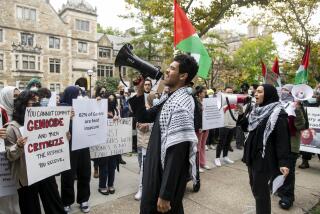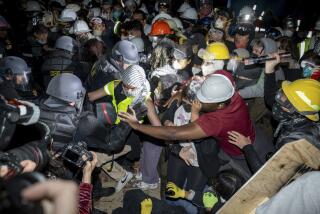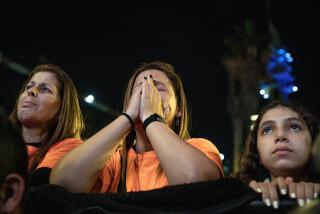Academics Sift Through Disasters, Searching for Lessons
- Share via
NEW YORK — Within days of the World Trade Center attack, academics known as quick-response researchers began descending on this battered city to study nearly every imaginable topic related to the crisis.
They came to look at how churches, mosques and synagogues reacted through sermons, prayer services and volunteer efforts.
They are studying whether the twin towers could have been built to withstand the extreme temperatures of burning jet fuel.
They are examining whether local police have deferred to federal authorities and the National Guard after a domestic terrorist attack.
And they’re watching how local universities treat Middle Eastern students, and how these students respond.
These sociologists, psychiatrists, engineers and others hope that what they learn can be helpful in preparing for other disasters, natural or man-made.
Researchers say the immediate aftermath of disaster provides a rare glimpse into human emotion and behavior. Months from now, the rubble will be gone, businesses will have relocated and residents will have adopted new routines. Only memories will be left.
“If you want to study behavior, the best way to do that is to see it,” said Dennis Mileti, director of the Natural Hazards Research and Applications Information Center at the University of Colorado.
No estimates are available for the number of studies underway, but the Colorado center alone has funded 10 applications with federal money for travel to New York, Washington and Pennsylvania.
Researchers from the University of North Texas will arrive in New York this week to look at how the Red Cross, Salvation Army and other private agencies divvy up responsibilities with police and other authorities. These tasks include compiling missing persons lists, comforting families and offering counseling.
Two groups are looking at the role of social advocacy organizations and other nonprofits in Washington after a terrorist attack on the Pentagon.
Another team has already returned from Shanksville, Penn., where they looked at how small volunteer fire departments worked together after a hijacked United Airlines flight crashed there, killing all 44 on board.
“We were looking for signs of organization, disorganization, cooperation and competition,” said Nancy Grant, a professor of public administration, urban studies and emergency management at the University of Akron in Ohio.
Other studies will proceed more slowly. “We go in with plans for fairly comprehensive assessment, which takes a lot more time and forethought,” said Dr. Carol North, a psychiatry professor at Washington University in St. Louis who has long studied the effects of disasters on mental health.
North said she would probably look at the incidence of post-traumatic stress disorder among those who escaped from the twin towers after two hijacked airplanes crashed into them. These people ran for their lives on Sept. 11 as clouds of smoke covered them with soot and ashes.
Outside of academia, the American Society of Civil Engineers has assembled teams to study the World Trade Center collapse and structural damage to the Pentagon.
“What we’re looking to see is if there’s anything we can do in the future to change the performance of buildings,” said W. Gene Corley, the principal investigator for the World Trade Center engineering team.
The New York team has an engineer on hand to assist with rescue planning and observe the condition of the debris. Others will study blueprints, building components and photos of the airplane crashes and building collapses.
The attacks have not only inspired new research, but they have also altered studies already underway. Columbia University researchers have been studying Muslim communities in New York for three years. The team had planned to wait a few years before returning to see how the the communities had changed. Instead, reviewers are in the field now, looking at Muslim community responses to daily events, discrimination against them and their collaboration with people of other faiths.
The team has had to recruit additional research team members just to keep up.
“This has kick-started it [follow-up research] in ways that no one had ever imagined,” said Louis Cristillo, the project director. “This is going to catapult the interest in Muslims as individuals, as groups, as organizations, as Americans.”
More to Read
Sign up for Essential California
The most important California stories and recommendations in your inbox every morning.
You may occasionally receive promotional content from the Los Angeles Times.













